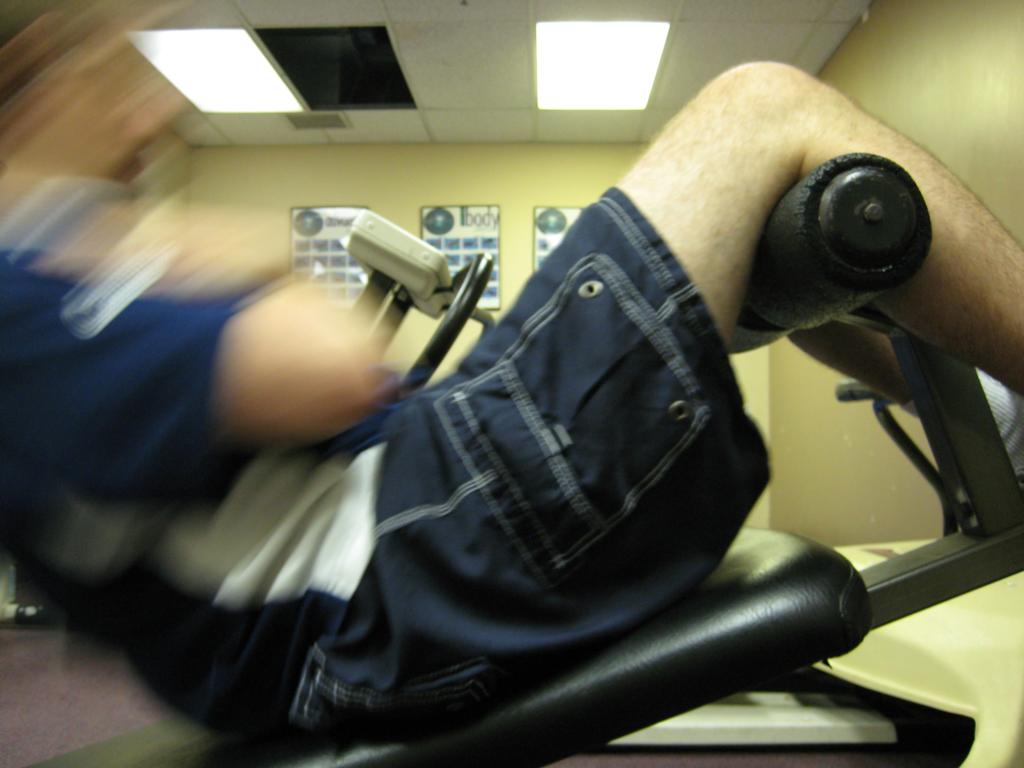
Get Rapid Results With This Quick Workout
Photo Credit: Greg Habermann, via Flickr Creative Commons
The Ornish Lifestyle Medicine program (Intensive Cardiac Rehabilitation) prescribes aerobic exercise a minimum of three hours per week and total body strength training at least twice per week. It’s straight-forward, but a common challenge people face is making the time to get in their workout time. Whether you are an exercise veteran or novice, a concern about time can feel like a roadblock that prevents you from beginning an exercise program at all.
This method of strength training not only cuts down time, but also challenges you to keep moving.
Strength training is an area where I’ve seen many participants feel challenged. In cardio workouts, you can simply walk, cycle, or swim at a moderate pace and receive the benefits. Strength training, on the other hand, involves equipment, sets, reps and specific techniques to make the exercise safe and effective. Strength training also requires rest and recovery that is mandatory for muscular improvements. One method that I’ve used successfully in the past that helps my clients achieve successful strength training and minimize the time it takes is what I call the “Paired Variation Approach.”
Typically people approach strength training with a “set and rest” approach. They complete one set of 6-15 repetitions of a bicep curl, rest anywhere from 30 seconds to two minutes, and then complete another set. While this traditional process is great for athletes of all levels to build power, strength, and gain muscle mass, it requires a great deal of time. To minimize the time impact and still get a great strength workout, try the following routine, or a variation that you create.
Basic Goals:
- One to two sets of 10-15 repetitions
- Exercise two to three times per week
- Strength routine before or after cardio
Series Example:
- Squat 1 set
- Bicep Curl 1 set
- Choice exercise: i.e Plank or Ab Crunches 1 set
- Squat 1 set
- Bicep Curl 1 set
The goal is after you do a set of squats, you can go directly to another exercise that targets a different muscle group, like the bicep. This will allow each muscle group to rest while the other muscle group is stimulated. This significantly limits any time of inactivity and also can, if you wish, provide a great endurance workout. For variation, you can choose exercise that involve your abs, core, hips, rotator cuffs, as well as balance exercises.
Other pairing could include:
- Shoulders/Back, broken up by an exercise of your choice (i.e. ab crunches)
- Chest/Calves, broken up by an exercise of your choice (i.e. plank)
- Tricep/Lunges, broken up by an exercise of your choice (i.e. ab crunches)
Depending on your goals, you can customize this routine to emphasize certain body parts. One example could be to add lunges in after triceps for enhance leg workout. Often I have used the choice part of the workout for heavy core work such as plank, or crunches, or even balance training. Another adaptation would be to increase the speed of this workout for more of a circuit training effect or to slow it down and work on focus and technique while still limiting inactive time. This method of strength training not only cuts down time, but also challenges you to keep moving while emphasizing the rest of the previously worked muscles. I also recommend alternating between doing this routine before and after your cardio workout.
What time saving methods do you use to get in your prescribed workout time?








